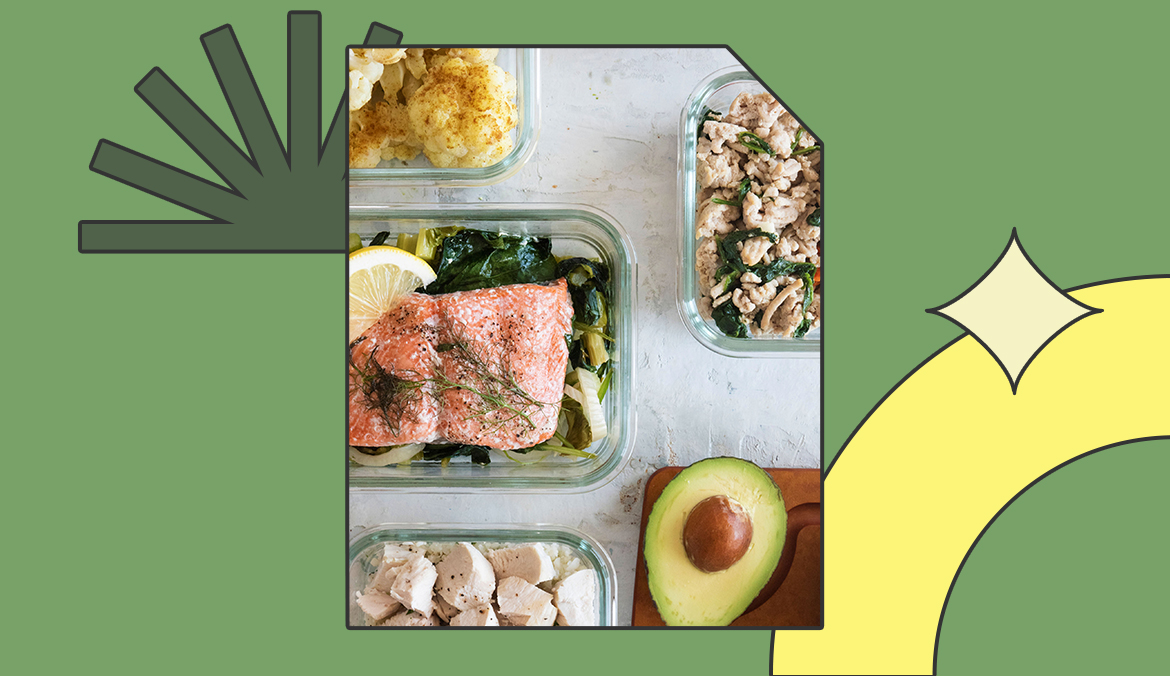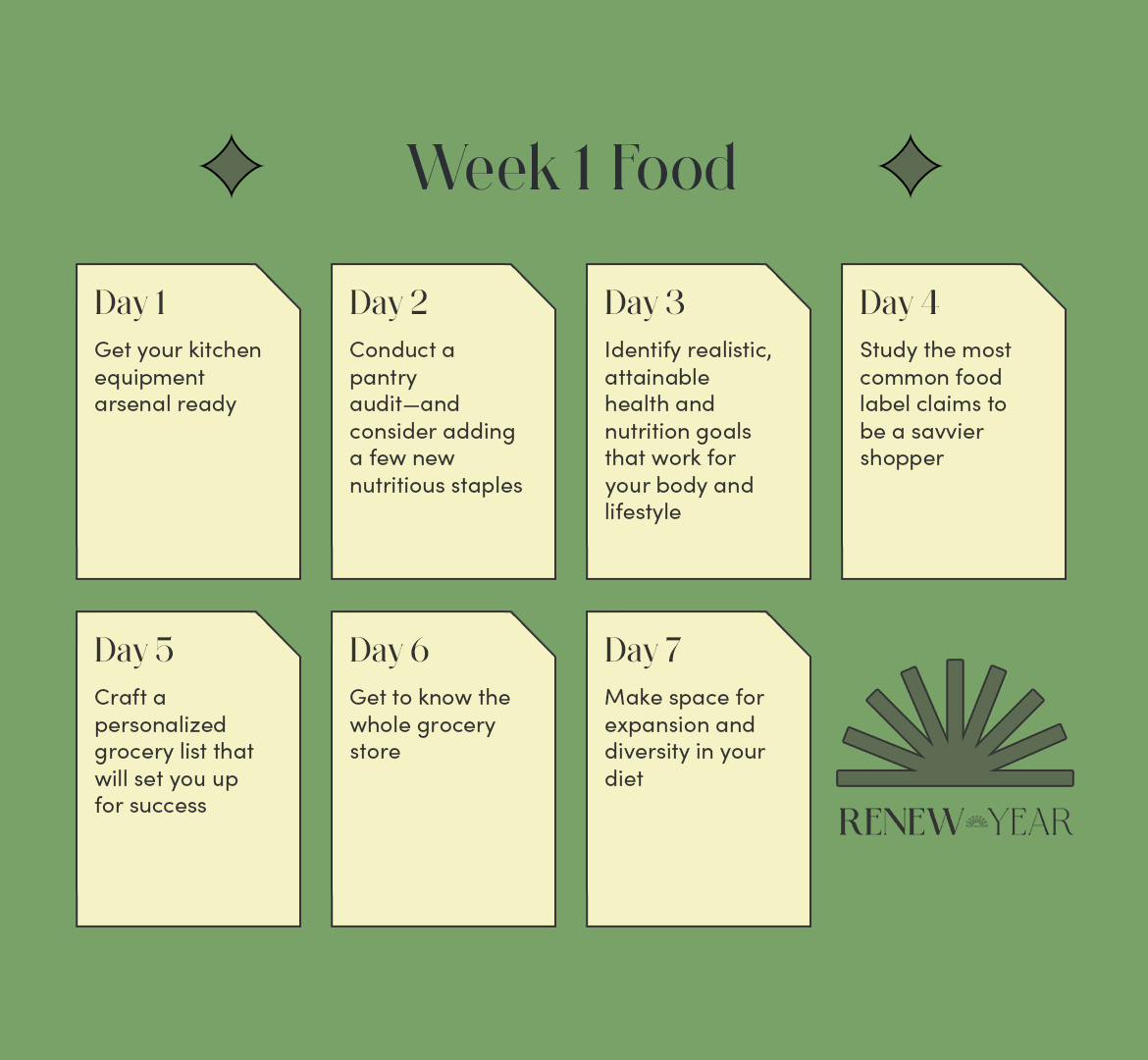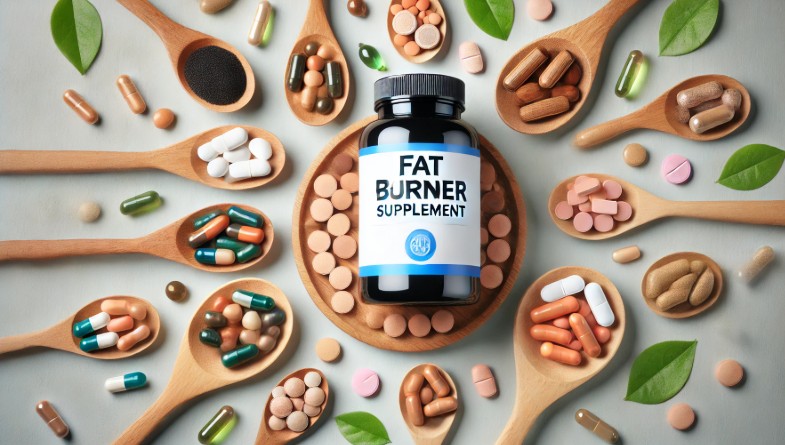
I’ve heard it so many times: New Year, New You. As a trained nutrition professional and cookbook author who works with individuals from diverse backgrounds, I have learned that dominant Western social norms have taught us to believe that come January 1st, we are expected to attempt to transform ourselves into a whole new person—crash dieting and exercising with extreme fervor included. Toxic diet culture has an unfortunate tendency to praise individuals for engaging in restriction and shame those who choose to nourish and rest their bodies. No longer. This year, we’re encouraging you to take it easy and hone in on healthy habits that you can live with for an entire trip around the sun—and beyond.
Before we jump into Well+Good’s annual ReNew Year food program, allow me to introduce myself. I’m Maya Feller, RD, a registered dietitian nutritionist, on-air food and nutrition expert, and author. I am the founder of Maya Feller Nutrition, a private nutrition practice based in Brooklyn, New York, that offers nutrition counseling and wellness coaching from a patient-centered, anti-bias approach to provide culturally-relevant, evidence-based care.
To help you kick your year off feeling energized, balanced, and well-fed, I’ll be sharing some of my key nutrition pillars, customizable tips for cooking and shopping, and deliciously nourishing recipes with you daily throughout the month of January. Over the course of the next four weeks, we’ll take a gentler and more sustainable approach to your new year together. This approach aims to celebrate you, the individual, in all of your glory, respect your heritage and culture, encourage gratitude, and, most importantly, ask you to prioritize the culturally-relevant foods and routines that can be added to your nutrition and wellness routine.
I also want to challenge you to reframe how you think about and define what foods are “good” for you. There are many healthy foods that are not kale, brown rice, and grilled protein. In fact, many of the foods outside of the Western “wellness” scope come from countries and cultures that have historically been marginalized. It’s time to branch out and expand what’s showing up on your plate.
In my upcoming cookbook, Eating From Our Roots (out January 24), I ask readers to shed the negative and harmful social norms around food and nutrition while encouraging them to spend time in the kitchen creating nourishing, nutrient-dense dishes. No more restriction or feeling like you aren’t part of the nutrition elite; no more shame for enjoying foods that haven’t been crowned with a health halo. There is space to include a variety of grains, starchy and non-starchy vegetables, fruits, proteins (yes, both plant- and animal-based), herbs, spices, and so much more in your pattern of eating.
This month, together, we will celebrate flavor! I will encourage you to make mindful and intentional choices about food based on what is accessible to you. You’ll have the opportunity to explore all parts of the grocery store as well as farmer’s markets when available. Additionally, I’ll help you make culturally-relevant food choices that are free of shame or guilt—all while reminding you that you deserve to be well-nourished and satisfied.
Ready to get started? Let’s jump in.

Day 1: Get your kitchen equipment arsenal ready
The many delicious dishes you’ll be making this month require a well-equipped kitchen. Having a reliable supply of basic kitchen gadgets on hand—including pots, pans, sharp knives, cutting boards, and storage containers—and keeping them well-organized will make it so much easier to prepare and serve homemade meals.
Start by surveying your pots and pans. Do you see any rusty spots or places where the surface is peeling? If so, you might need a replacement. (Pro tip: Cast iron pots and pans are brilliant when it comes to longevity; they work on the stovetop as well as the oven and they last a lifetime if well-maintained.) Find a chef’s go-to guide for what pieces of cookware every kitchen needs here.
Next, check your knives—sharp knives are a must, especially when it comes to slicing and dicing fresh produce safely and efficiently. If your knives are not sharp, it is time to invest in a sharpening tool.
A few good cutting boards of varying sizes are always good to have at home, too. And lastly, reusable storage containers allow you to meal-prep dishes ahead of time and safely keep them in the fridge or freezer for later use.
Day 2: Conduct a pantry audit—and consider adding a few new nutritious staples
Now that your kitchen tools are stocked and ready for use, we can focus on your pantry. If you ask me, a well-stocked pantry can save a meal; it can take it from lackluster to spectacular. You don’t need to have an abundance of items, though—it’s all about the curation of ingredients you keep on hand.
Just as you did with your kitchen tools, take stock of what dry and canned goods you already own before buying anything new. See a can of tomato sauce from the ‘90s? Toss it. Discover an unopened, still-fresh jar of chicken broth? Don’t buy a new one this week. Get in the habit of surveying your pantry, fridge, and freezer before you go grocery shopping to cut down on food cost and waste.
Now, onto the fun part—what I recommend adding to your pantry for flavorful, nutritious, and fuss-free meals. Consider stocking up on these options:
- Grains: Fonio, black rice
- Beans: Low-sodium canned beans (if you can’t find low-sodium beans, rinse your beans to reduce the sodium content) and dried beans
- Tinned fish: SMASH fish (this stands for sardines, mackerel, anchovies, salmon, and herring; each of these options contains high amounts of brain-boosting omega-3 fatty acids) and sustainably-caught tuna (look for an MSC certification on the label)
- Nuts and seeds: No nuts or seeds are off limits; choose the ones that are culturally relevant to you
- Jarred tomatoes
- Oils: Plant-based oils are excellent for cooking and finishing; choose the options that fit within your flavor profile and budget. Pumpkin seed oil is one of my personal favorites—it’s an excellent finishing oil and tastes delicious on everything from yogurt to roasted vegetables
- Dried herbs: These can add major flavor without being costly. Look for dried herbs that don’t contain added sodium (and season on your own if you want to dial up the saltiness)
Day 3: Identify realistic, attainable health and nutrition goals that work for your body and lifestyle
Now that your kitchen is ready for action, I recommend level-setting with yourself by setting intentions for the weeks ahead. When identifying and setting a health goal, I like to remind my patients that it should be realistic and attainable. So rather than trying to turn back the clock or striving for something insurmountable, let’s work from the “now.”
In my practice, I often work with people who are at risk of developing (or have already developed) a chronic condition. I remind these patients that while a cure or reversal of their diagnosis may be possible, in the event that isn’t, living with a well-managed diagnosis is.
I encourage you to think about your current health situation. Do you have any diagnoses or pre-diagnoses that would benefit from nutrition modification, and what are the small steps that you could take to move toward your goal? Would you benefit from having a consistent bedtime, reducing your alcohol intake on the weekends, or finding ways to include pleasurable and intentional movement into your day? Start by jotting down these health goals in a journal, then try brainstorming some ways to make progress on them that fit within your current lifestyle.
Day 4: Study the most common food label claims to be a savvier shopper
You can’t accomplish your goals without the proper tools, right? We already tackled the kitchen—now we’re diving into the task of understanding food label claims. Because let’s be honest: Grocery shopping has become increasingly complicated. Front-of-box labels on packages make so many claims, and they may or may not actually be relevant to consumers. In order to be a savvy shopper, it’s important to be able to parse out the important information from the superfluous claims. Ultimately, you will need to decide what is valuable to you. Below are some common claims and their current definitions.
Organic (as defined by the USDA):
- Produce: “Produce can be called organic if it’s certified to have grown on soil that had no prohibited substances applied for three years prior to harvest. Prohibited substances include most synthetic fertilizers and pesticides.”
- Animal proteins: “Regulations require that animals are raised in living conditions accommodating their natural behaviors (like the ability to graze on pasture), fed 100 percent organic feed and forage, and not administered antibiotics or hormones.”
- Packaged and multi-ingredient foods: “Regulations prohibit organically processed foods from containing artificial preservatives, colors, or flavors and require that their ingredients are organic, with some minor exceptions.”
Non-GMO Project Verified (as defined by Non-GMO Project): “The Non-GMO Project Verified mark assures consumers that the product bearing the label has been evaluated for compliance with the Non-GMO Standard. The verification mark does not state that a product is ‘GMO Free,’ and it does not state that the product is safer, better, or healthier. It simply states the product is compliant with the Non-GMO Project Standard.”
Regenerative agriculture (as defined by California State University Chico Center for Regenerative Agriculture and Resilient Systems): “Regenerative Agriculture is an approach to farm and ranch management that aims to reverse climate change through practices that restore degraded soils. By rebuilding soil organic matter and soil biodiversity, we significantly increase the amount of carbon that can be drawn down from the atmosphere while greatly improving soil fertility and the water cycle.”
Natural (as defined by Consumer Reports): “Has no clear meaning on a majority of foods.”
Pasture raised (as reported by Certified Humane Raised and Handled): “There is currently no legal definition for ‘Free Range’ or ‘Pasture Raised’ in the United States, therefore these terms are often used on poultry packaging with no unilateral definitions for the consumer to trust.”
Grass fed (as defined by the USDA): “Grass (Forage) Fed means that grass and forage shall be the feed source consumed for the lifetime of the ruminant animal, with the exception of milk consumed prior to weaning. The diet shall be derived solely from forage consisting of grass (annual and perennial), forbs (e.g., legumes, Brassica), browse, or cereal grain crops in the vegetative (pre-grain) state. Animals cannot be fed grain or grain byproducts and must have continuous access to pasture during the growing season.”
Day 5: Craft a personalized grocery list that will set you up for success
We’re officially ready to hit the grocery store, which means it’s time to make a shopping list. Because you are your own individual, I encourage you to honor your likes, dislikes, current health status, finances, cooking abilities, culture, and so much more when deciding what foods to put into your grocery cart. For instance, when working with patients, I often speak with them about their favorite foods and the dishes they find most comforting so that we can find ways to incorporate these foods into their weekly grocery lists without guilt or shame.
Your grocery list should include foods that you are comfortable making, ones you enjoy, and familiar items. In addition, I encourage adding a few partially-prepared foods (or chef’s helpers, as I like to call them)—this might include bagged salad greens, pre-chopped vegetables, frozen fruit, marinades, simmer sauces, dips, and spreads.
Next, think through what boxed, jarred, and canned foods you might need this week, as well as fully-prepared items like rotisserie chicken or fresh bread. And don’t forget an assortment of fresh and dry herbs and spices!
Your grocery list should always reflect your current health needs as well as your personal preferences. Follow this template as a starting point:
Sample Grocery List
- Fresh produce:
- Frozen produce:
- Canned goods:
- Dry goods:
- Boxed and jarred goods:
- Fresh herbs and spices:
- Dried herbs and spices:
- Dairy products:
- Meat and/or poultry:
- Seafood:
- Prepared foods:
- Partially-prepared foods:
- New-recipe needs:
Day 6: Get to know the whole grocery store
Nutrition providers—myself included—have been shouting the phrase “Shop the perimeter!” (aka the section of the grocery store where fresh fruits and vegetables are typically found) for many years now. But somewhere along the way, we forgot to remind folks that they should also shop the rest of the grocery store, too—not to mention prioritize food choices that support their current and desired health as well as their budget.
Let this be your reminder to explore all of the lovely aisles of your local grocery store. After all, food is expensive, and we need to find creative, nourishing, and delicious ways to stretch our food dollars. Packaged goods are not off-limits. Here are some tips to help you become an informed consumer when shopping for them:
- When looking at the Daily Value (DV) percentage on a product’s Nutrition Facts panel for any given nutrient (i.e. carbohydrates, sodium, saturated fat, potassium, vitamin C, and so on), a number hovering around five percent of the DV would be considered low, and a number close to or above 20 percent of the DV would be considered high. So if the fiber content of the packaged goods is listed as 30 percent of the DV, then that would be considered a high-fiber item; if the sodium content is three percent of the DV, then that would be considered a low-sodium item.
- Now that we’ve studied up on label claims, we know not to get too caught up on the front of package labeling like “organic” or “gluten-free.” All that tells you is that the product is organic or gluten-free, right? Instead, flip the package over and read the ingredient list. The first five ingredients make up the majority of packaged goods. If the first five ingredients are something that you want to eat (or have heard of), then great! If not, consider moving onto another option that better suits your needs.
Day 7: Make space for expansion and diversity in your diet
You officially have one inspired and important food shopping trip under your belt. Kudos! Today, as you dig into your delicious groceries, give yourself the space to think about what you can add to your diet (rather than remove) as you continue to introduce new ingredients and dishes into your meal rotation. The goal is to start a pattern of eating that includes all the foods you love and keeps you excited about the new flavors and nutrient-rich foods you might be trying—this is a more sustainable method, and therefore likelier to “stick” in the long term.
If your desire is to increase your intake of plant-based foods, expanding the varieties of plants that you consume is an excellent option. For example, leafy greens can mean collards, dandelion and beet greens, chard, taro leaves, and so much more—it’s not just kale, folks. Or, if you want to increase your intake of seafood, exploring smaller, more sustainable types of fish such as sardines and anchovies is a great place to start.
Considering ways to incorporate more diversity, exploration, and flavor into your meals is a pretty wonderful way to round out the first week of the year, no?








